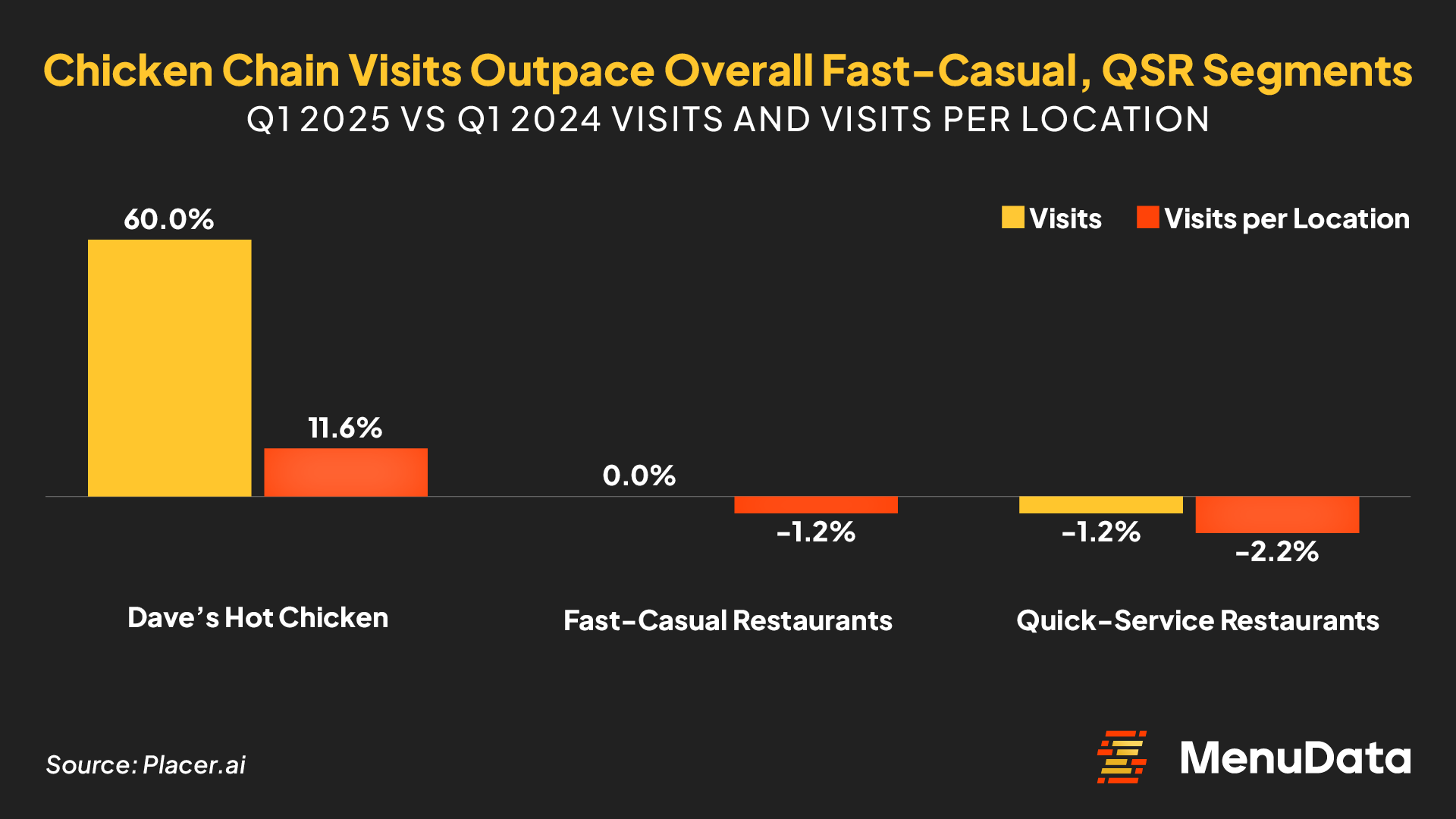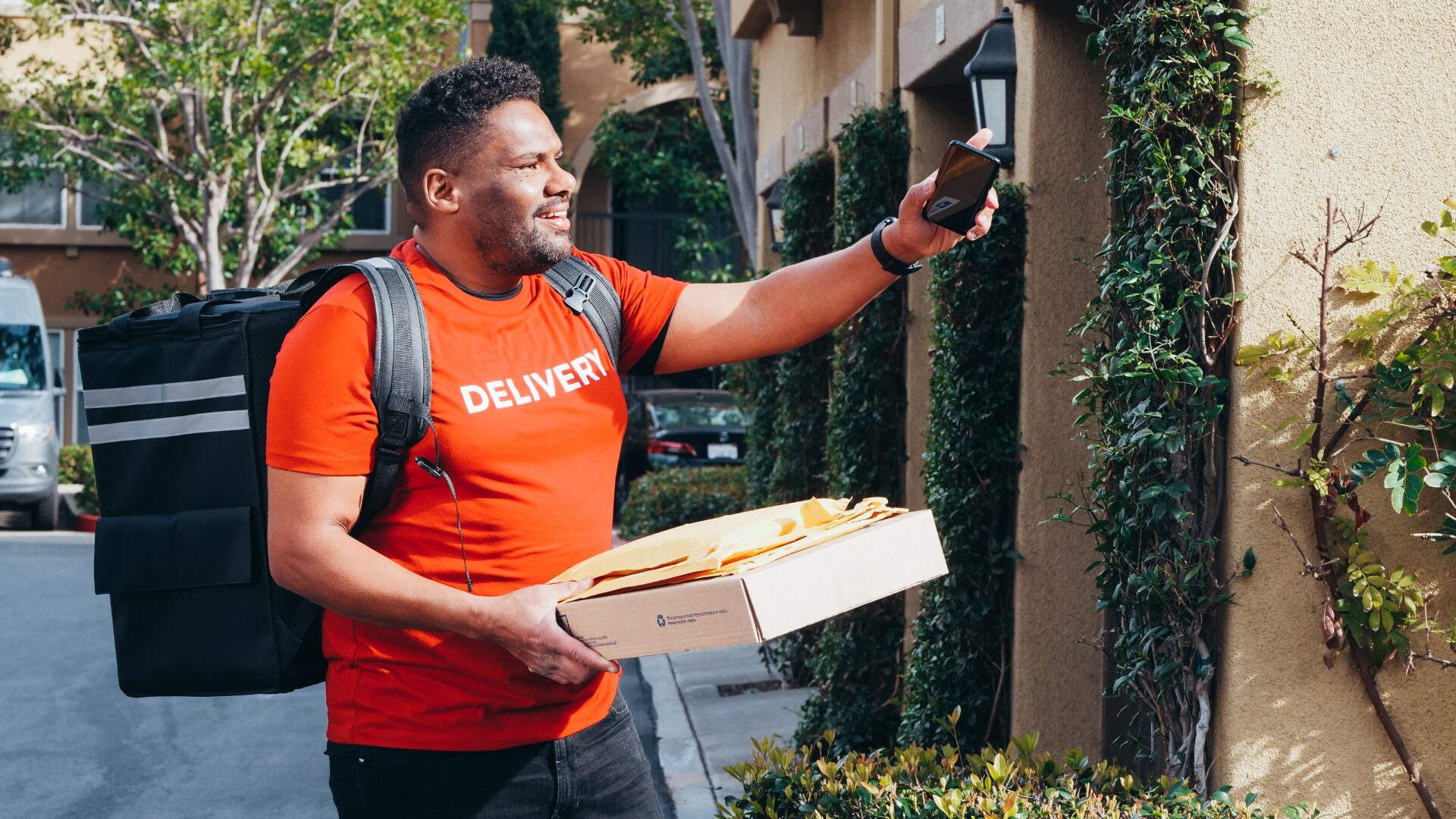Chicken continues to be the most popular protein in America, and a number of new chicken QSRs outperformed fast-casual and quick-service restaurants in the first quarter of 2025.
“Chicken has always been a staple in American food culture, but over the last few years, it’s become the most versatile, craveable protein out there,” said Jack Mashini, co-founder of Wing Snob, a chicken chain that’s gone from less than 20 locations to 75 locations in the past year.
Wing Snob leadership plans to eventually reach more than 150 locations. The chain is an up-and-coming competitor in a highly competitive chicken market. Placer.ai recently released a report that looked at how some of the most popular chicken chains are performing, including Huey Magoo’s Chicken Tenders, Super Chix, Dave’s Hot Chicken and Raising Cane’s.
Placer.ai noted that Dave’s Hot Chicken, which was recently acquired by Roark Capital in a billion dollar deal, experienced the most significant year-over-year visit growth of those chains, at 67.2% in Q4 of 2024 and 60.0% in Q1 of 2025. Those figures were significantly higher than the next closest competitor (Super Chix, at 26.9% and 19.7% respectively). Raising Cane’s and Huey Magoo’s followed Super Chix closely.
“I think the rise of customizable flavors, spicy options, and indulgent comfort foods have played a huge role in chicken’s popularity,” Mashini said.
“Wings, tenders, sandwiches – they’re shareable, social media-friendly, and hit that sweet spot between nostalgic and exciting.”
“Plus, with the rise of delivery and takeout, chicken travels really well compared to other foods, and that’s been a huge advantage for the category,” the Wing Snob co-founder added.
When it comes to year-over-year growth in average visits per location, Dave’s and Raising Cane’s were the top performers, at 11.6% and 3.6% respectively.
A common factor for these chicken chains is their strength in the suburbs and mid-sized cities,, Placer.ai wrote. What could be working to chicken chains’ advantage is that, although they often popular the same cities, there’s still distinct customer bases that allow for multiple chains to perform well within close proximity. Huey Magoo’s, for example, attributes 15.4% of its visitors from “rural” areas and only 1.9% of Dave’s Hot Chicken came from that area.
What this means is that, even though there’s a lot of competition in the area, there’s room for brand differentiation and other chains to succeed.
“From day one, we set out to deliver … a menu of bold, creative flavors you can’t get anywhere else,” Mashini said. “People today want more than just good food – they want a brand they can vibe with.”
So, what are the keys for success for chicken chains? According to Mashini, it’s all about knowing who you are and leaning into that, unapologetically.
“In a crowded category, the brands that win are the ones with a clear identity,” Mashini said.
“Whether that’s through bold flavors, an unforgettable guest experience, or a strong digital presence,” Mashini said, “you can’t just serve good wings anymore; you need to create a brand people want to engage with.
“Innovation, authenticity, and understanding your customer base inside and out are what separate the leaders from the followers.”
The Food Institute Podcast
Just how difficult is it to scale a better-for-you snack company? Rebecca Brady, founder and CEO of Top Seedz, shares how she turned a homegrown idea into a rapidly scaling snack brand and breaks down the strategy behind her growth, from bootstrapping production to landing national retail partnerships.













